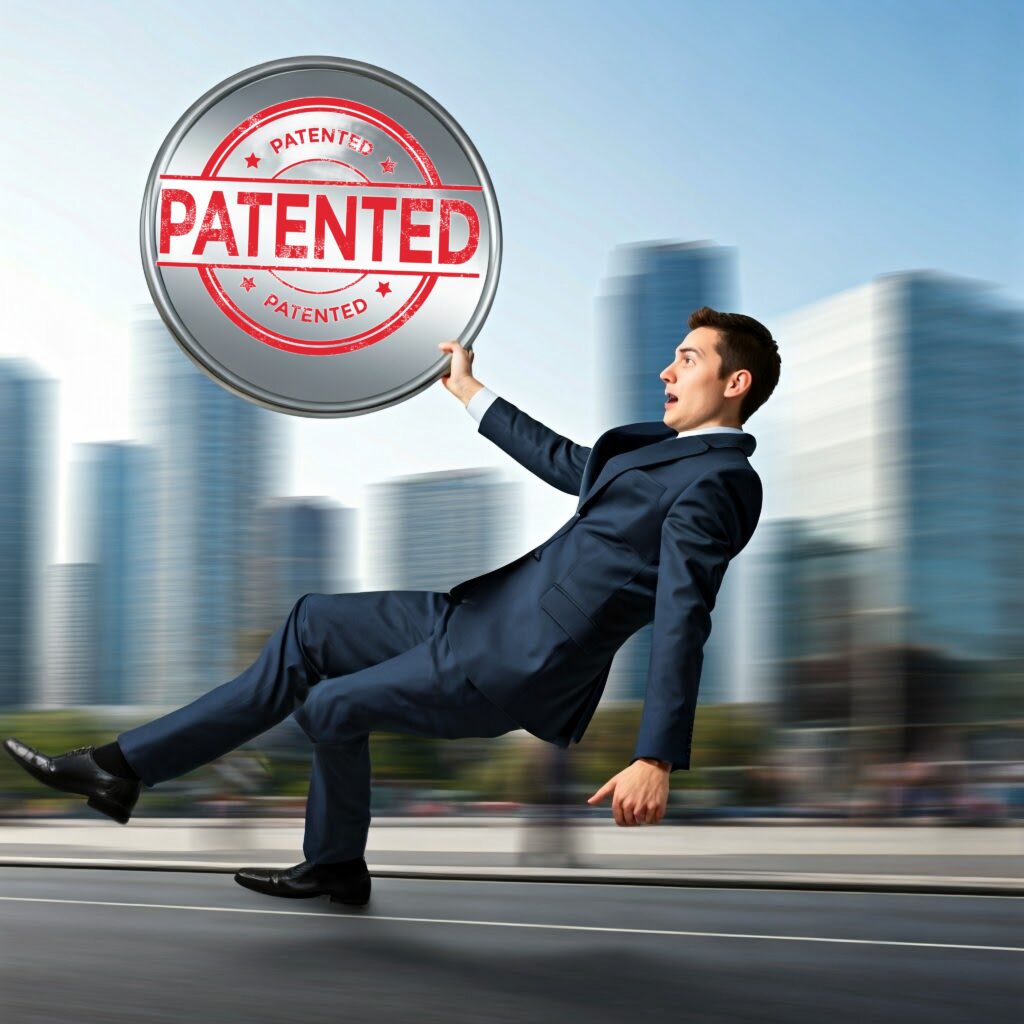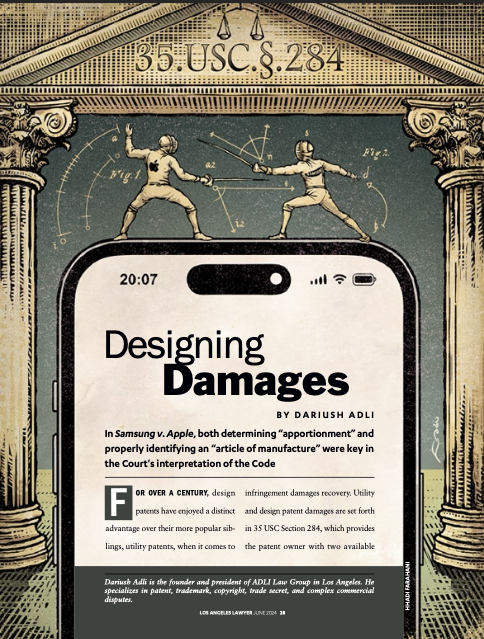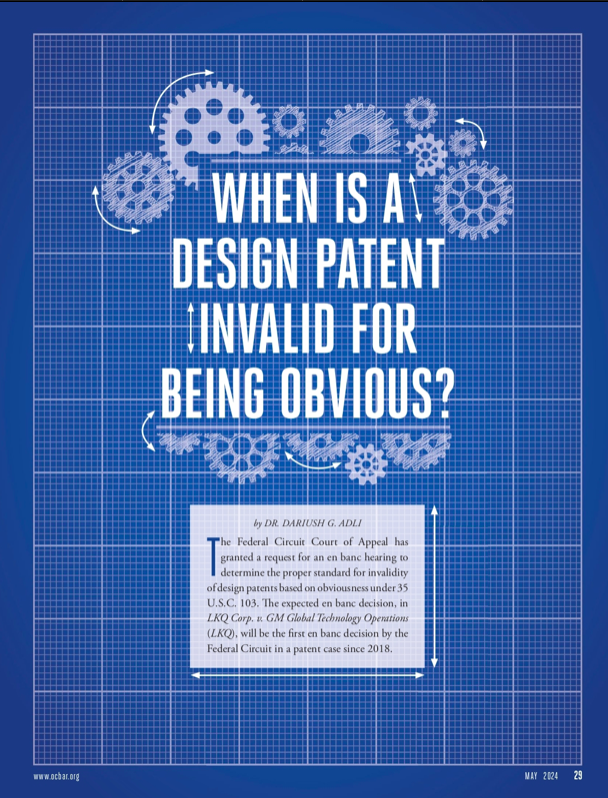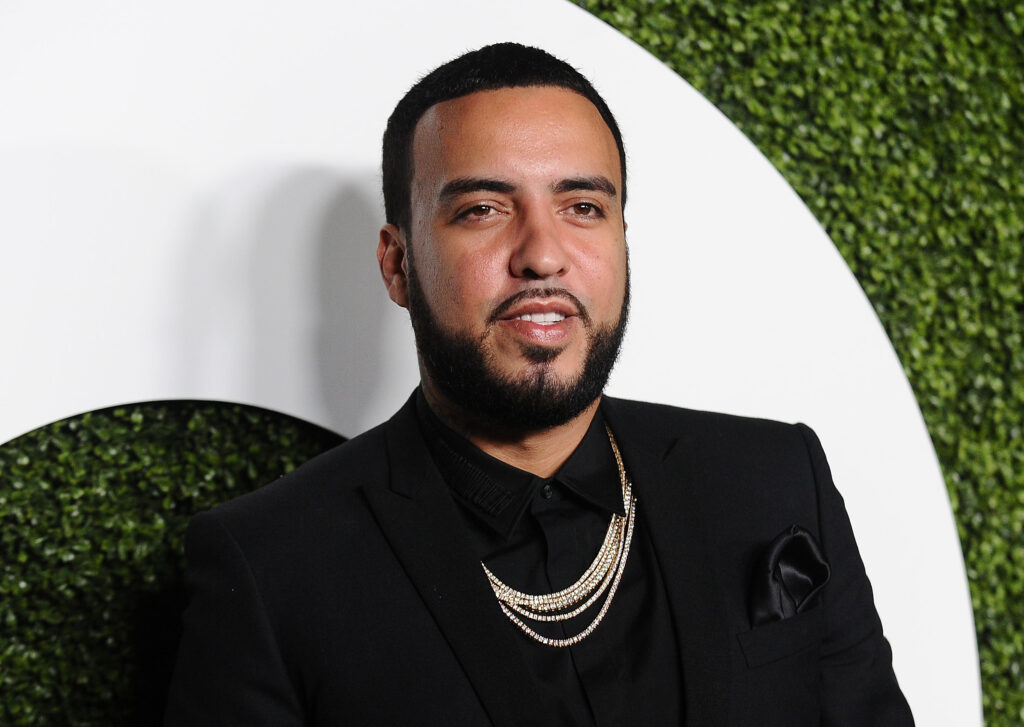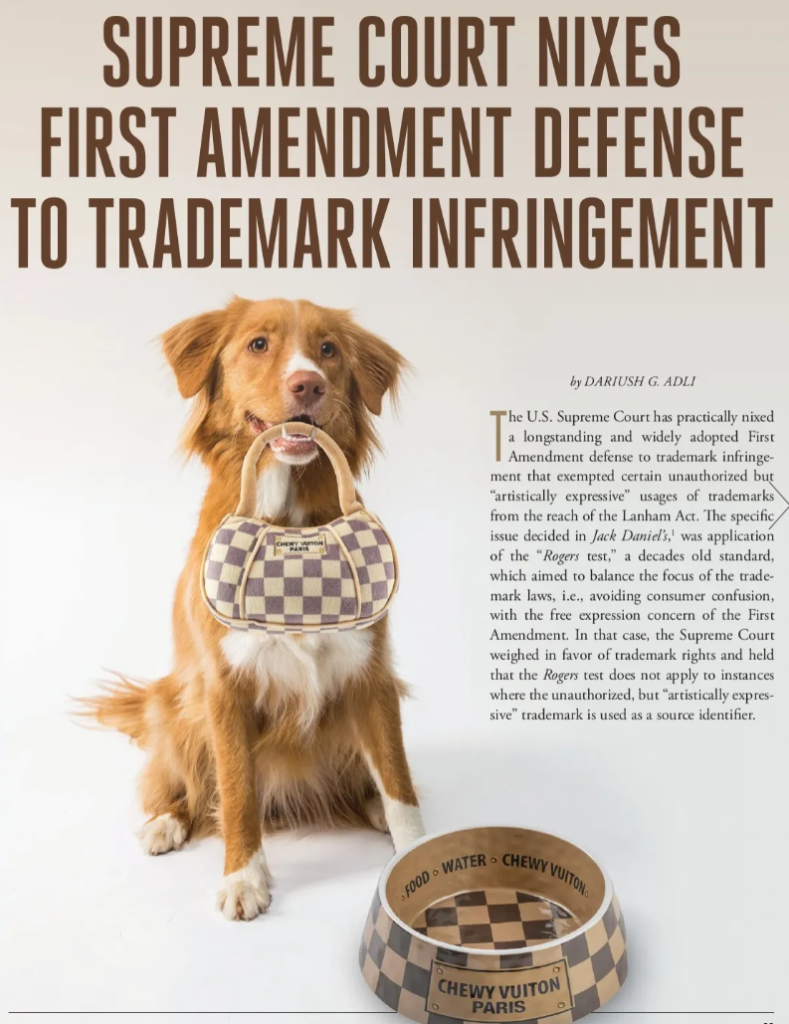Posts by ADLI Law Group
Clarifying Standing in Patent Infringement Lawsuits
The Federal Circuit clarified that in patent infringement suits, the key to constitutional standing is the “right to bring suit.” A “bare licensee” with only a promise not to be sued lacks exclusionary rights and cannot sue. A recent court of appeal decision has clarified the requirements for satisfying constitutional standing in order to bring a patent infringement suit. The Intel. Tech., LLC. v. Zebra…
Read MoreEn-Banc Federal Circuit Redefines Forty-Year-Old Design Patent Invalidity Standard
A May 2024 article1 in this publication discussed a pending en-banc session of the Federal Circuit Court of Appeal, which has plenary jurisdiction over all patent appeals, to consider continued viability of a four-decade standard for design patent invalidity based on obviousness. The appeal court has now issued its long awaited ruling (LKQ)2 and has…
Read MoreDesigning Damages
In Samsung v. Apple, both determining “apportionment” and properly identifying an “article of manufacture” were key in the Court’s interpretation of the Code For over a century, design patents have enjoyed a distinct advantage over their more popular siblings, utility patents, when it comes to infringement damages recovery. Utility and design patent damages are set forth…
Read MoreWhen Is A Design Patent Invalid For Being Obvious?
The Federal Circuit Court of Appeal has granted a request for an en banc hearing to determine the proper standard for invalidity of design patents based on obviousness under 35 U.S.C. 103. The expected en banc decision, in LKQ Corp. v. GM Global Technology Operations (LKQ, will be the first en banc decision by the…
Read MoreDeceptive Intent for Patent Unenforceability Based on a Pattern of Conduct
The Federal Circuit Court of Appeal has just issued a significant ruling in Luv n’ Care, Ltd. v. Laurain (Fed. Cir., Apr. 12, 2024, No. 2022-1905) 2024 WL 1590593, at *8–9 (LUV) dealing with the standard for proving the intent element of inequitable conduct, which is a defense to enforcement of patent rights. The question before the appeal…
Read MoreWhen it comes to damages recovery, design patents trump utility patents
Determination of reasonable royalty is often difficult to prove and can leave a large portion of the profits with the infringer. Lost profits, on the other hand, corresponds to the sales the patent owner would have made if it had not been for the infringement. Design patents are not as popular as their better-known sibling,…
Read MoreFrench Montana’s Legal Triumph: ADLI Law Group’s Victory in Copyright Dispute
ADLI Law Group is pleased to announce a significant legal triumph on behalf of our esteemed client, the renowned rapper French Montana. The victory comes in the context of a copyright infringement lawsuit filed by artist Eddie Lee Richardson, known professionally as Hotwire the Producer. In a meticulously considered decision, U.S. District Judge Nancy L.…
Read MoreWarhol and Prince: Redefining Fair Use
In a highly consequential decision involving signature works of renowned artist Andy Warhol and photographs of music legend Prince, the U.S. Supreme Court has clarified the long-standing fair use defense to copyright infringement and narrowed the scope of transformative works that qualify as fair use. The decision in Andy Warhol Foundation for the Visual Arts,…
Read MoreSupreme Court Nixes First Amendment Defense To Trademark Infringement
The U.S. Supreme Court has practically nixed a longstanding and widely adopted First Amendment defense co trademark infringement that exempted certain unauthorized but “artistically expressive~ usages of trademarks from the reach of the Lanham Act. The specific issue decided in Jack Daniel’s, was application of the “Rogers test”, a decades old standard, which aimed to…
Read MoreCopyright Protection for Public Performances of Pre-1972 Music
A 2021 decision by the Ninth U.S. Circuit Court of Appeals has renewed focus on the scope and extent of copyright protection for public performances of pre-1972 sound recordings. The issue decided by the three-judge panel for the Ninth Circuit was whether California state copyright law protects rights to public performances of music created before…
Read More
